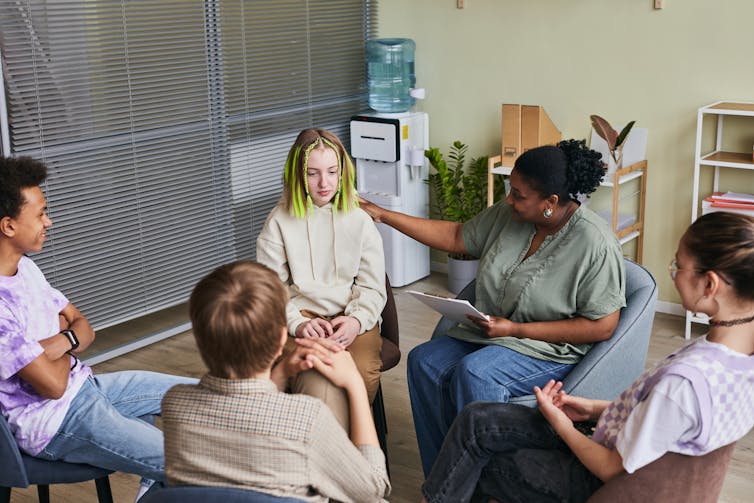Source: The Conversation (Au and NZ) – By Anita Moyes, Lecturer, Edith Cowan University

Shutterstock
Teachers are not always equipped to deal with the growing health needs of their students, from mental health challenges to complex medical needs.
Federal and state governments are currently looking at “key targets” as part of the next National School Reform Agreement, which starts in 2025.
A consultation paper, which looks at many aspects of teaching and learning, hones in on how to improve student mental health and wellbeing. It specifically asks:
What can be done to establish stronger partnerships between schools, local health networks and primary health networks?
Paying more attention to the role school nurses can play in school communities is a great place to start.
School nurses are real nurses
It’s a common misconception among students and staff that school nurses are not “real nurses”.
I come across this in my work with school nurses – people think nurses are only trained to work in hospitals, even though a large group specialise in working outside them.
School nurses are qualified and registered health professionals. School nursing is also one of the oldest nursing specialities. Australia has had school nurses for more than 100 years.
What do they do?
School nurses are located all over Australia, in urban, regional and remote areas. They can be employed by state or territories’ public health services or employed directly by their schools.
What nurses do varies from school to school. This can be confusing for education staff, parents and even school nurses themselves.
There are no hard-and-fast rules. The hours school nurses work and the work they do (even the job title they have) often depends on their employer.
Some school nurses primarily care for students with acute health issues such as illness or injury. They can also give prescribed medications for seizures, ADHD or diabetes, and help students with chronic or complex health needs such as a tracheostomy or gastrostomy, where students need help with their breathing or nutrition.
Beyond this, nurses can coordinate health care for boarding school students, or attend school camps and sporting events.

Shutterstock
Health promotion and screening
Some school nurses focus on health promotion and early interventions.
This can includes screening for speech, vision or hearing problems.
It can also include working with teachers to deliver health education about topics such as vaping and respectful relationships.
Read more:
Vaping and behaviour in schools: what does the research tell us?
Nurses as a bridge between two worlds
School nurses are the bridge between health and education: while well informed about the health system, they also have insight into how complex schools and classrooms can be.
School nurses can help young people be – and stay – at school. They can manage student health directly as well as working with complex student health needs to inform individual education plans and support inclusion.
School nurses can also be advocates for children, and help them beyond the school gates.
They can help young people experiencing family, sexual health, stress, or drug use problems and refer them to other services.
They can engage with and support families, helping them access community resources and navigate the health system.
A 2021 review of Australian and international studies of school nurses found they had significant impact in facilitating access to health care, chronic disease management, coordinating care and reducing absenteeism.
But nurses also facilitated early intervention, access to social care, and reduced emergency department visits and hospitalisations.
We need more information
Despite the many benefits, we don’t know exactly how many school nurses there are, or even how many students they provide care to as this information isn’t publicly available.
Some sources suggest there are approximately 1,500 school nurses in Australia but this is likely to be an underestimate.
The school nurses are also not equitably distributed. Some students have a full-time nurse at their school, some have a part-time nurse while other children don’t have access to a school nurse at all.
A recent workforce survey indicates many nurses working in community settings such as schools are underutilised and not being able to use all their skills on the job.
With the school reform agreement there is a major opportunity to improve health services to students by improving their access to school nurses.
In the meantime, if you’re lucky enough to have a school nurse, take the time to talk with them. You may be surprised what they can do for you. You can usually contact the nurse through the school office.
Read more:
What is the National School Reform Agreement and what does it have to do with school funding?
![]()
Anita Moyes is a Research Officer for the WA School Nurses Association.
– ref. Australia has had school nurses for more than 100 years – but we don’t use them enough – https://theconversation.com/australia-has-had-school-nurses-for-more-than-100-years-but-we-dont-use-them-enough-210058








